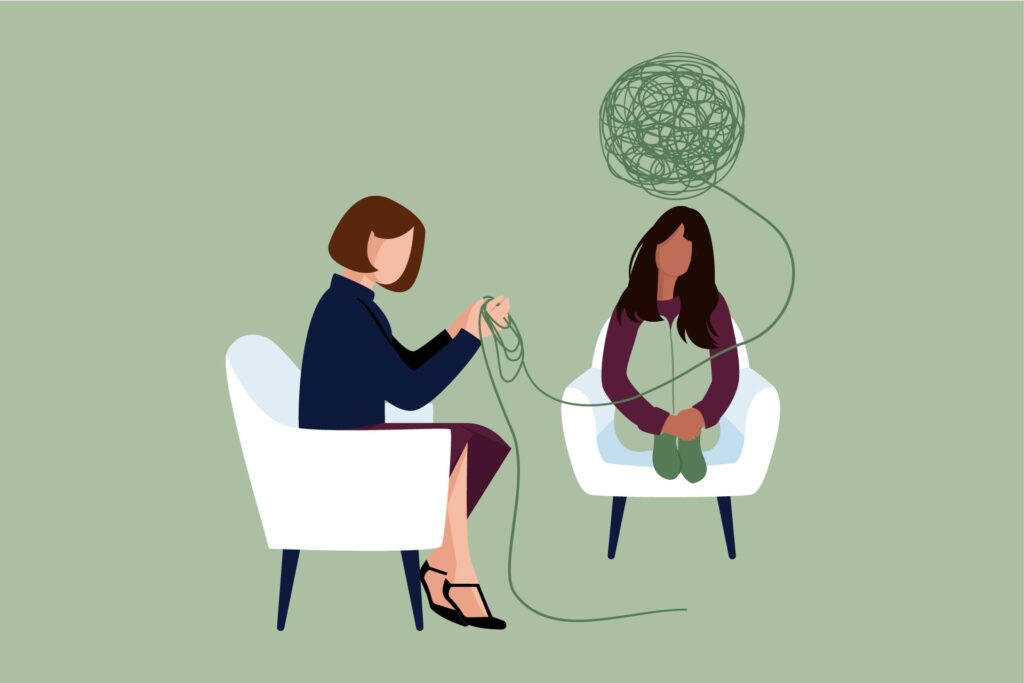Victim Blaming
Victim blaming is harmful for survivors - learn how to be a better support for survivors and end victim blaming
Victim blaming is all too common when it comes to instances of all forms of sexual violence, and these victim blaming statements and ideologies are incredibly harmful to survivors. Belittling a survivors’ experience, doubting their story, and making them feel like something they said or did caused the sexual violence to happen is traumatic for survivors and brings about feelings of shame. Victim blaming statements like the ones we have listed (among others) from loved ones, or even strangers, can make survivors feel silenced and may make them reluctant to disclose to anyone ever again or reluctant to seek help for their pain.
Many times people aren’t aware that the way they are responding to a disclosure or to a piece of media about sexual violence perpatuates victim blaming narratives. Questions that ask for more details about the incidence may not be stated with ill intent, but nontheless they cause negative impact and push forth victim blaming mentalities. As supporters of survivors, we do not need to know the details of what happened to them if they do not want to share them – our job is to listen and make the survivor feel heard and believed. Any statements referring to what the victim was wearing, consuming, doing, who they were hanging out with, etc. perpetuate victim blaming.
Let’s be super clear- it is NEVER the victim’s fault. Sexual violence is a systemic issue rooted in patriarchy, sexism, racism, and colonialism- there is absolutely nothing a victim could do or say that would make them at fault for experiencing harm. When you hear stories of sexual violence in the media, or receive disclosure from someone, responding with empathy, active listening, and belief is the most important thing.
By eliminating victim blaming statements and focusing on empathic responses to disclosures and survivors, we begin to dismantle the victim blaming mentality that has been so deeply engrained in our society.
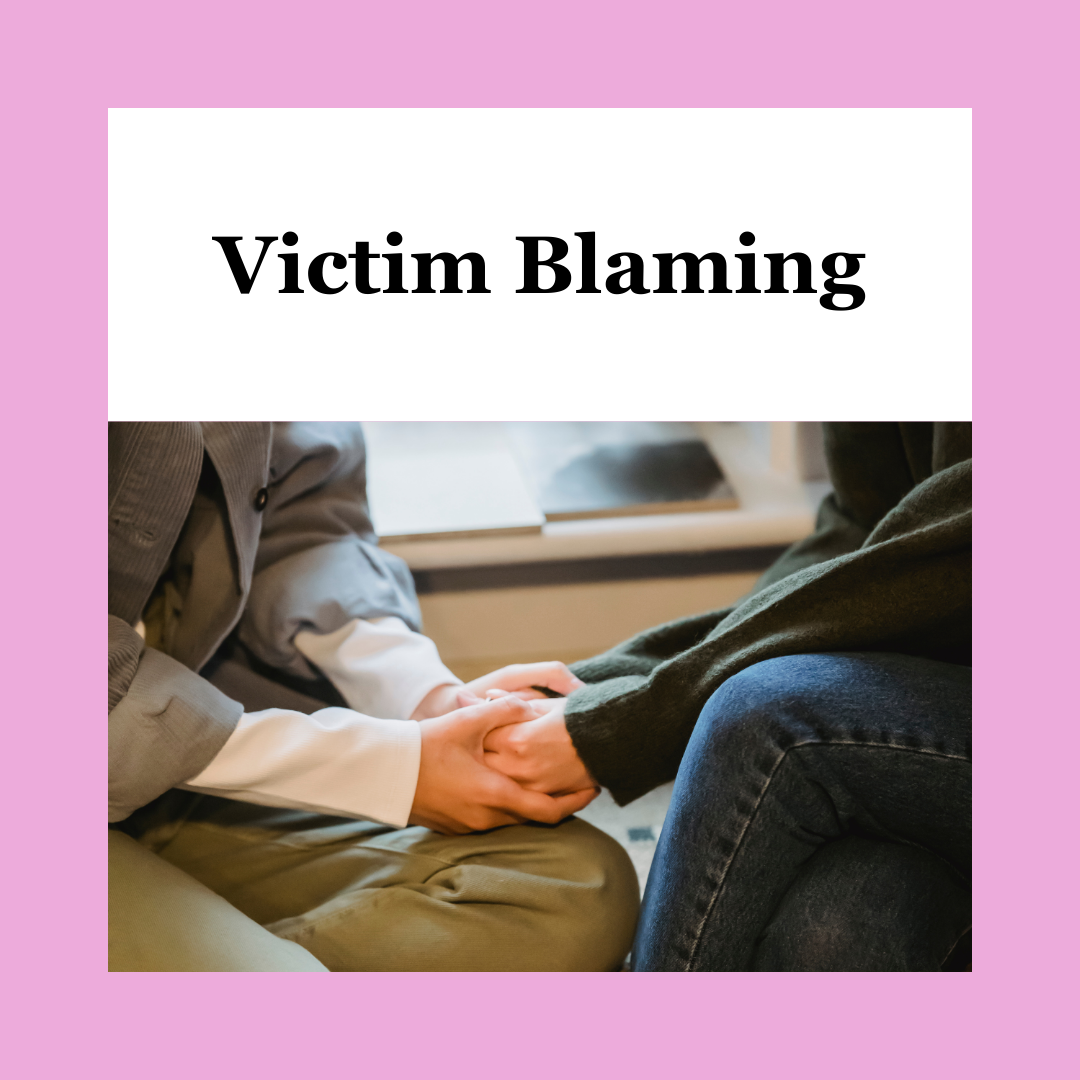

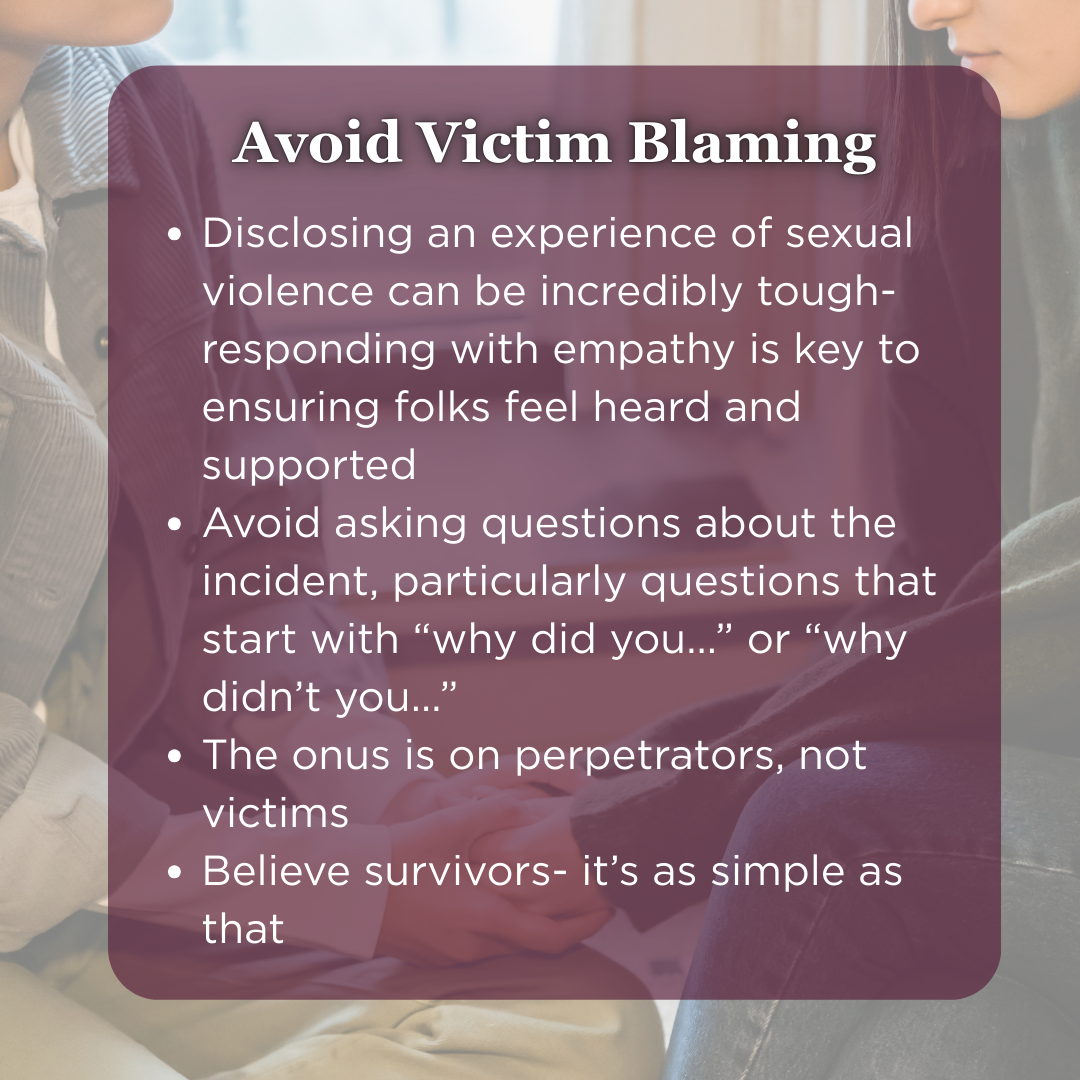
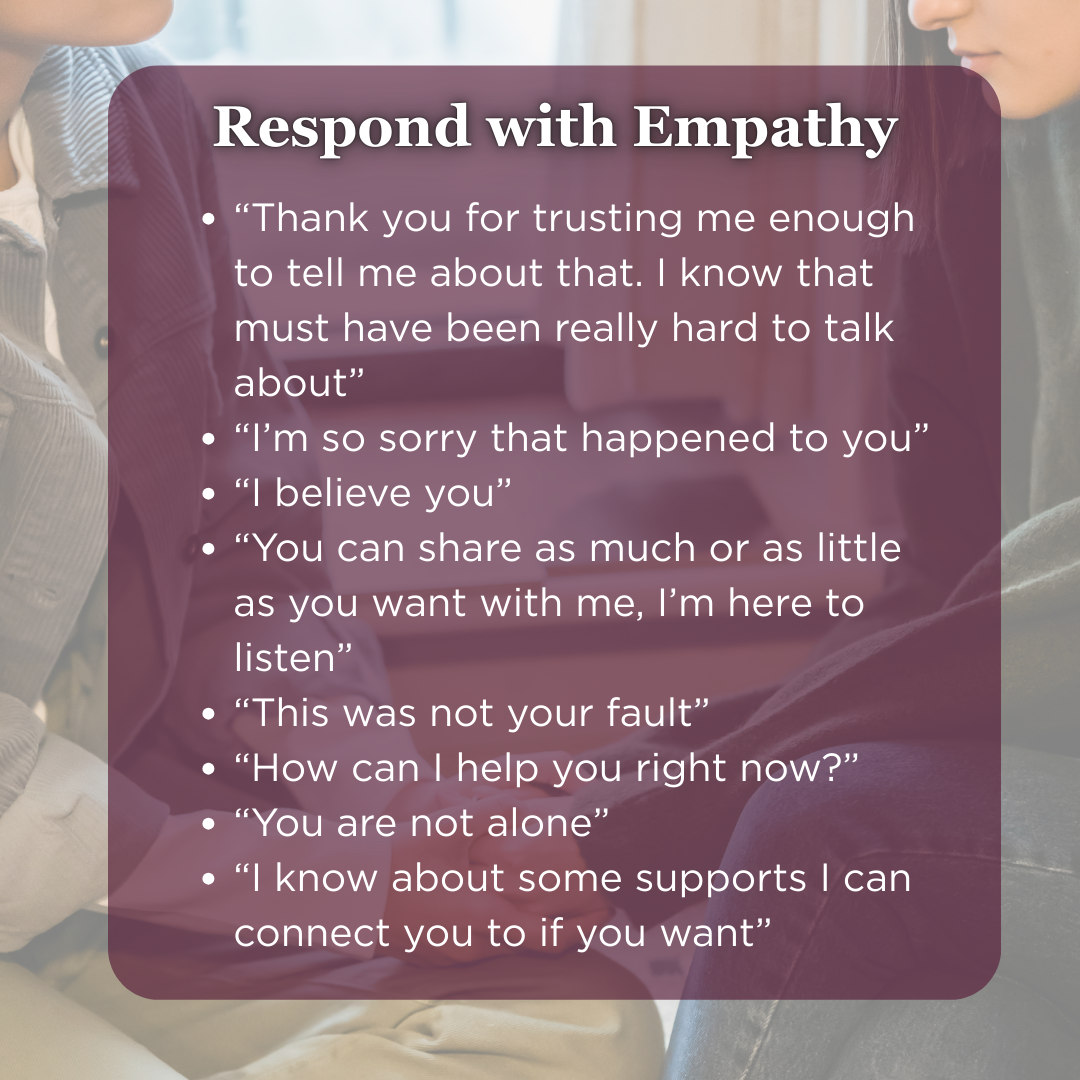
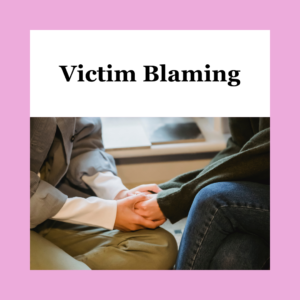
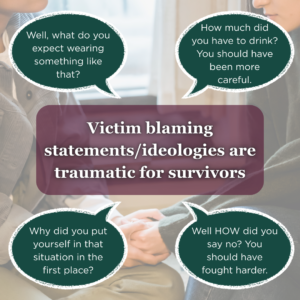
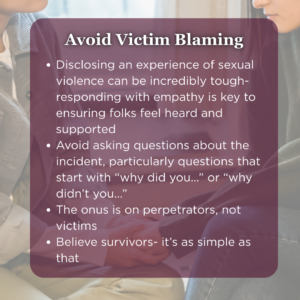
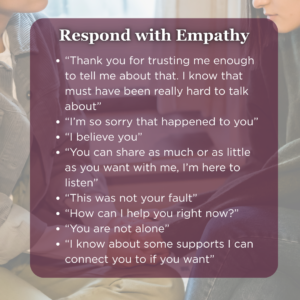
Contact Us
- 360 George Street North, 4th Floor, Peterborough, ON, Canada, Ontario
- Office Line: 705-748-5901
- info@KawarthaSAC.ca
People of All
Backgrounds, genders, sexualities, ages and abilities are treated with respect and dignity in a nonjudgmental and supportive environment at Kawartha Sexual Assault Centre.

© 2025 Kawartha Sexual Assault Centre. All Rights Reserved.
